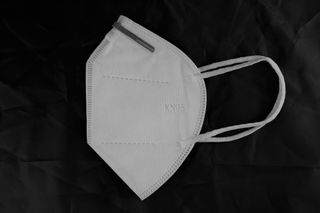Mask mandates are not returning in most school districts in the midst of the latest COVID surge. Only 2 percent of the nation’s 500 largest school districts require masks according to Burbio, a data service that has been tracking school policies throughout the pandemic. This is despite the fact that cases have recently increased by 26 percent and on average 3,000 Americans are being hospitalized per day and 275 people are dying.
However, teachers still seeking to avoid exposure to COVID can one-way mask, which can still reduce risk, say experts. Linsey Marr, a professor of civil and environmental engineering at Virginia Tech and a leading authority on airborne viruses, says there are best practices to keep in mind for one-way masking.
1. Quality of Mask Matters for One-Way Masking
One-way masking can be highly effective with the right mask. As most are aware, N95s are the favored mask due to the high-quality and tight fit, but KN95s and KF94s can provide comparable levels of protection, though there are many fake KN95s out there to be wary of, Marr says. In studies conducted at Marr’s lab and another lab, these masks provided about 90 percent protection against particles in the air. While still better than no mask, cloth masks are not as effective, Marr says.
“If you haven't tried one of these so-called respirators, such as an N95, KN95, or KF94, you might want to give it a try because you can get a lot better protection,” she says. “They are, in most cases, actually easier to breathe through and easier to talk in compared to a cloth mask.”
2. Remember That Without Universal Masking There is No Source Control
If everyone in a school is wearing a mask that provides what experts call source control. “If someone is infected, the mask blocks their viruses from getting into the air. So that helps reduce viruses in the air that everyone's breathing,” Marr says. “If you're just relying on one-layer masking, you could have infected people who are releasing the virus into the air, so there might be more in the air. But if you are wearing a good-quality mask, you will ideally breathe in very little of it.”
3. Fit Is Important When One-Way Masking
“You're looking for a tight seal all the way around, so no gaps,” Marr says. “This can happen, especially around the nose bridge. So you definitely want a mask that has a wire, some kind of bendable metal that you can shape around your nose. Watch out for gaps on the sides of the cheeks -- that happens, especially with surgical types of masks -- and under the chin. You can do things to make your mask fit better, such as tightening up the ear loop.”
For those using surgical masks, Marr recommends the CDC’s knot-and-tuck method for creating a tighter seal. Facial hair will interfere with the seal, so Marr advises a mustache or goatee that fits inside the mask. “If you do have a lot of facial hair, and you want to keep it, I think something like a surgical mask with a neck gaiter to hold it tightly against your face can help,” she says.
4. Consider One-Way Masking In High-Risk Situations
Marr says educators may still want to wear masks in certain situations. “If local cases were high and the vaccination rates in my area were low, that would tip me more toward masking,” she says. “If we go to a really crowded room with lots of people for an assembly or something like that where people are sitting close together and the air is stuffy, that would be a time where one-way masking would be more important.”
5. Even if You’re Not One-Way Masking, Don’t Throw Away Your Mask Just Yet
Even those who are not one-way masking should keep their masks handy for the future. “Mask mandates are being lifted, which I think makes sense as cases come down,” Marr says, but she advises holding onto those masks. “I hope that masking culture in this country has changed and that we are more open to considering it. I think there may be times in the future when it would be useful to have mask mandates again for short periods of time during surges.”
Unfortunately, nuance often gets lost in the politicized and highly polarized battle over masks and mask mandates. “I see this argument of ‘masks work’ versus ‘masks don't work.’ And both are right and both are wrong because it's not zero or 100 percent,” Marr says. “Masks help, they reduce your exposure, and some masks are better than others.”


